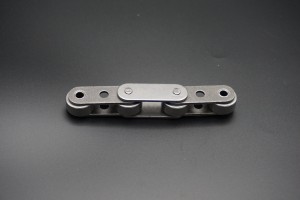Preventive measures for roller chain welding deformation
As a widely used mechanical transmission element, the quality of roller chain is crucial to the stable operation of mechanical equipment. Welding deformation is a common quality problem in the production process of roller chain. It will not only affect the accuracy and performance of roller chain, but also may lead to product scrapping and increase production costs. This article will introduce the preventive measures for roller chain welding deformation in detail, hoping to provide some useful references for the production of roller chain.
1. Causes of welding deformation
Before discussing preventive measures, let’s first understand the causes of roller chain welding deformation. During welding, local high-temperature heating will cause the material to expand thermally and shrink after cooling. This uneven thermal expansion and contraction is the main cause of welding deformation. In addition, factors such as welding process parameters, material properties, and structural design will also affect welding deformation.
2. Material selection
Appropriate material selection is the basis for preventing welding deformation. For example, selecting materials with small thermal expansion coefficients and high strength can reduce deformation during welding. At the same time, the purity of the material is also very important. Materials containing more impurities are more likely to produce defects such as pores and cracks during welding, thereby increasing the risk of deformation.
3. Design Optimization
During the design stage of the roller chain, some measures can be taken to prevent welding deformation. For example, try to use a symmetrical structure, which can balance the heat input during welding and reduce deformation. In addition, the reasonable design of the size and position of the weld to avoid excessive concentration of the weld can also effectively reduce the degree of welding deformation.
4. Welding process control
The influence of welding process parameters on welding deformation is very significant. Reasonable selection of parameters such as welding method, welding current, voltage and welding speed can effectively control the input of welding heat and thus reduce deformation. For example, the use of low heat input welding methods such as pulsed argon arc welding can reduce thermal expansion and contraction during welding.
5. Pre-deformation and rigid fixation
Before welding, the components of the roller chain can be pre-deformed to produce the opposite deformation to the expected deformation during welding, thereby offsetting the deformation caused by welding. In addition, the use of rigid fixation methods, such as the use of clamps, can limit the deformation during welding. However, it should be noted that after welding is completed, the constraints should be released in time to avoid excessive residual stress.
6. Welding sequence and direction
Reasonable welding sequence and direction can effectively control welding deformation. For example, adopting a symmetrical welding sequence and welding the welds in symmetrical positions first can balance the heat distribution during welding and reduce deformation. At the same time, choosing a suitable welding direction, such as welding from the middle to both sides, can also help control welding deformation.
7. Post-weld heat treatment
Post-weld heat treatment can eliminate welding residual stress and improve the organization and performance of the material. For example, annealing can release the stress inside the material and reduce deformation.
8. Quality inspection and control
Establish a strict quality inspection system to monitor and inspect the welding process of the roller chain in real time. By detecting the deformation during welding, timely discover and solve problems to ensure product quality.
In short, preventing roller chain welding deformation requires multiple aspects, including material selection, design optimization, welding process control, pre-deformation and rigid fixation, welding sequence and direction, post-weld heat treatment, and quality inspection and control.
Post time: Jun-06-2025

